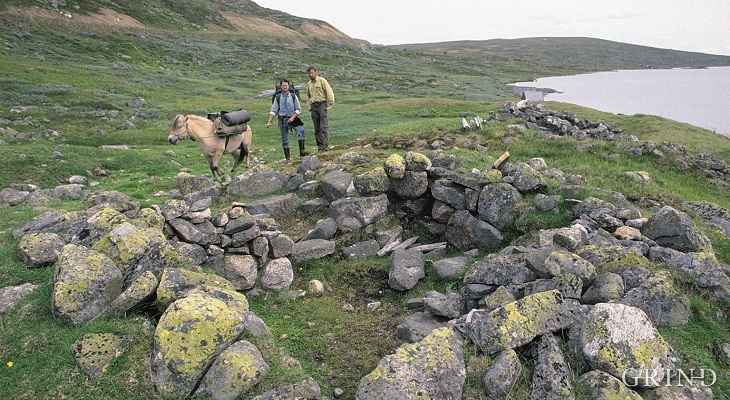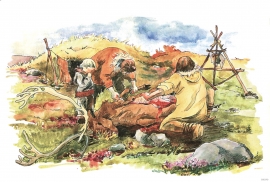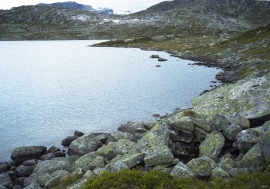In the old days the largest shed was used for overnight stops for travellers between West and East Norway. Some are of the opinion that this is the “Bishop's Dwelling” mentioned in sources from the 1600s in connection with visitations by the Stavanger bishop, on his way to the easternmost part of his bishopric. Right up to 1631 Hallingdal and Valdres belonged under the Stavanger bishopric.
Archaeological excavations have shown that the largest dwelling has been in use from the Middle Ages, and the bishopric connection may thus be correct. Here were finds of tin buttons and bits of clay pipes, iron nails and masses of horseshoe nails.
But even before the dwellings were built, there have been people there. In the gravel slope below the place there are some buried hollowed-out forms, filled with red-burned stones. Such cooking depressions were common on the Hardanger Plateau in early Iron Age. They may easily be as old as 1,500 or 2,000 years old. Some metres further north are the remains of a settlement from the Bronze Age, between 3,500 and 3,000 years old. Here around 40 arrow points made of flint and quarts were found. Close by was a 3,500 year old place for making fire, with remains of reindeer bones.
In the areas around Halnefjorden there have been found a number of settlements from the Stone and the Bronze ages. Along the beach, from Halne, for two kilometres eastwards, nine have been found. The oldest of them is more than 8,000 years old.





